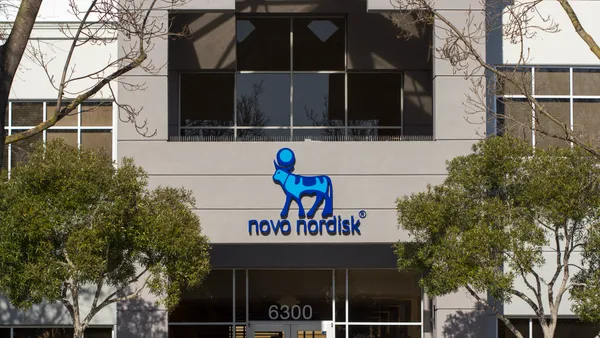24 S e p t e m b e r 2 0 07 VIEW on Marketing MARKET PERFORMANCE T he U.S. pharmaceutical industry operates within an extraordinar� ily competitive, complex, and high�stakes environment. With so much at risk, brand teams often choose to “pressure test” their key strategies before implementing them to avoid major setbacks or missteps that could negatively affect their product’s market performance. One common approach to pressure testing is competitive gaming. Competitive gaming has a well�established role in pharma marketing, and most brand teams turn to it at some point in their product’s life cycle. Competitive gaming allows a team to simulate in advance, and in a safe environment, the moves and counter�moves that are likely to occur as major strategic events unfold. While competitive gaming most commonly takes place around the time of the launch of a new product or indication, there are a number of different points in a product’s life cycle where com� panies can leverage competitive gaming. The timeline will depend on the brand team’s objectives, which often fit within one of the following cate� gories: . A brand team is launching into a competitive market. . A new competitor is launching. . A competitor just executed or is expected to execute a major strate� gic shift. . A brand team is expecting to make a major strategic shift and wants to understand its competitive implications. As with a product launch, planning for a competitive gaming exercise must be initiated well in advance of the actual event.The extent to which a team can clearly define its intended objectives for the exercise and suc� cessfully align the gaming approach with those objectives will often deter� mine the success or failure of the event itself. Successful companies typically take one of four common approaches to competitive gaming: group strategy session, shadow brand planning, detail simulation, or scenario modeling. Selection of the most appropriate of these approaches depends largely on the company’s objectives for the exercise. Four Common Approaches to Competitive Gaming To increase the likelihood of executing a successful competitive gaming exercise, a company must first understand each of the four approaches to competitive gaming. 1. Group Strategy Session A group strategy session is the most basic approach to competitive gaming and is best suited to companies with a tight timeline or budget con� straints. This approach is also appropriate for situations in which a single strategy must be analyzed in detail. A group strategy session is often a one� or two�day cross�functional strategic session in which a team identifies its competitive alternatives (e.g., development strategies or promotional mes� sages) and attempts to anticipate market reactions to those strategies through disciplined and careful analysis. This type of structured approach can help a company organize its time efficiently, but without input into the session from external market research or participants, a session can quick� ly begin to reflect the “group think” of its core team. 2. Shadow Brand Planning The overall goal of shadow brand planning is to help a brand team “get inside the head” of a few key competitors. A shadow brand plan is an in� depth analysis of a competitor’s current market position, tendencies, and likely paths of action. Ideally, a shadow brand plan should encompass a broad range of strategic factors, including: . Commercial strategies (e.g., promotional deployment, messages by tar� get, pricing); . Clinical development strategies (e.g., future indications, claims, publica� tions); . Managed�markets positions (i.e., current and future levels of access); and . Corporate strategies (e.g., position within a larger portfolio). Compared with a group strategy session, shadow brand planning is a more complex, moderate�cost approach to competitive gaming, and because of its detailed nature, it must be limited in focus to only a few key competitors. As a first step, therefore, the brand team must thoughtfully select the few competitors on which the initiative will focus. Once the focus is clear, the brand team can develop a detailed analysis of the key competitors using data from virtually all available sources and making informed estimates of current and future strategies. For each of the two or three products receiving detailed analysis, the brand team should seek to gain insight into a number of strategic and tactical issues, such as target market segments, likely segmentation strategy, positioning, messaging, key sponsors, pricing, and likely future scenarios. No competitive assess� ment can fully cover all strategic issues, but developing a checklist of the most critical issues will drive analysis for each of the key competitors select� ed for detailed review. 3. Detail Simulation Detail simulation games almost always include actual customers — Campbell Alliance Selecting the Right Approach to Competitive Gaming Tom Luginbill VP, Brand Management Practice 0907 PVV Layout PROOFS 9/11/07 4:06 PM Page 24 25 VIEW on Marketing S e p t e m b e r 2 0 07 MARKET PERFORMANCE usually physicians — and are often conducted offsite at a market research facility.The games are designed to expose prescribers to multiple product details to determine how they will react to brand messages and counter�messages. In the course of the game, pre� scribers receive product presentations from sales pro� fessionals (multiple products in succession), and pre� scriber responses are collected and analyzed. Detail simulation can help a team accomplish mul� tiple objectives, such as: . Pressure test promotional messages in advance of implementation; . Refine promotional materials; . Increase depth of knowledge among participants; and . Build a shared sense of product strategy and mes� saging across internal functions, such as sales and marketing. In most cases, both sales and marketing staff par� ticipate in and observe the process. The extended team collaborates as promotional messages and mate� rials are tested and refines them in advance of their use.The result is increased strategic clarity and consis� tency across functions. Like shadow brand planning, detail simulation is a moderate�cost approach to com� petitive gaming that can be used to help guide both strategic and tactical decision making. 4. Scenario Modeling Scenario modeling is by far the most powerful, ver� satile, and costly form of competitive gaming.While no two scenario modeling games are alike, they often share a set of common baseline attributes. Scenario modeling typically: . Is interactive and model�driven; . Requires weeks or months of preparation; . Employs multiple sessions and/or rounds to test various moves and counter�moves over a simulated period of time; . Is supplemented by primary market research and/or by teams of customers/observers who rate outcomes within each round; and . Provides quantitative results. The real power of scenario modeling lies in the fact that brand teams can define multiple scenarios based on complex and interre� lated variables, and that the output of the game can be quantitative, for example, scenario revenue forecasts. Through multiple rounds, a team can compare scenario outcomes over several simulated quar� ters or years and develop strategies and tactics to address high�threat market events. The net result can provide detailed guidance for deci� sion making. The Best Approach to Competitive Gaming The best approach depends on the situation at hand. Each of the four approaches offers its own benefits, and to make things even more complicated, the approaches can be combined and customized. Before deciding on which approach to select, the brand team should consider a range of factors that can influence its decision, as illustrat� ed in the Gaming Approaches chart. Before a team can select the right approach, it must be explicit about what its objectives are and what it hopes to achieve through a competitive gaming exercise. Failure to clearly define these require� ments usually leads to frustration and disappointment. Other factors also contribute to the success or failure of com� petitive gaming, as shown in the Common Pitfalls table. Care must be taken to ensure that the right environment is created for com� petitive gaming, or the brand team may be unable to avoid the com� mon pitfalls. Conclusion Competitive gaming provides a valuable means for brand teams to test and refine their commercial strategies and marketing messages before implementing them, which is why selecting the most appro� priate approach is so important. By following these tips, a brand team can choose the approach that best suits its needs and improve its chances of executing a competitive gaming exercise that meets — or even exceeds — the expectations of the participants. # CAMPBELLALLIANCE, Raleigh, N.C ., is a specialized management consulting firm that serves the pharmaceutical and biotechnology industries, helping clients develop strategic and operational plans, as well as improve the efficiency of their internal operations. For more information, visit campbellalliance.com. Gaming Approaches Common Pitfalls Common Pitfalls of Competitive Gaming . Conclusions of the game are based on conjecture and gut feel of a small group . The approach is overly academic and fails to deliver actionable results . Too much focus is on winning the game, rather than on learning why team decisions prompt the outcomes they do . Poor planning results in wasted time at gaming sessions Optimal Environment for Competitive Gaming . Objective and fact�based approach . Focus on clear/discrete strategic choices facing the brand team . Focus on understanding the impact of team decisions, rather than simply “out smarting” another team . Disciplined process, clearly defined in advance, no wasted time Issue/Objective The team needs results within one or two weeks The team needs results within one or two months The team needs to focus clearly on key competitors The team needs quantitative results to support decision making The team needs to analyze a single strategy in detail The team needs to compare multiple strategies under multiple scenarios The competitive game project is highly cost constrained Objectives include sales/marketing alignment and/or promotional campaign development Group Strategy Session Shadow Brand Planning Detail Simulation Scenario Modeling Which Approach is Best? Optimal Suboptimal The team has multiple strategic alternatives that need to be evaluated 0907 PVV Layout PROOFS 9/11/07 4:06 PM Page 25
An article from


Selecting the Right Approach to Competitive Gaming
Filed Under:
Commercialization








